If you love food, you’ll love Lyon

There is probably no city in the world more food-centric than Lyon, France. By virtue of its history, location and passion for gastronomy (which borders on obsession), Lyon has variously been called the “stomach of France” and the “world capital of gastronomy.”
Located in the Rhone-Alps region, between Paris and the French Rivera, Lyon is the third largest city in France (after Paris and Marseilles), known not only for exceptional foods and wines but also for its legendary chefs and cooking traditions.
Having previously visited Lyon briefly on a river cruise, my husband and I hungered to return. This time we stayed for a week, arriving on the high-speed train from Paris to the Lyon-Perrache station, a two-hour trip through the rolling countryside.
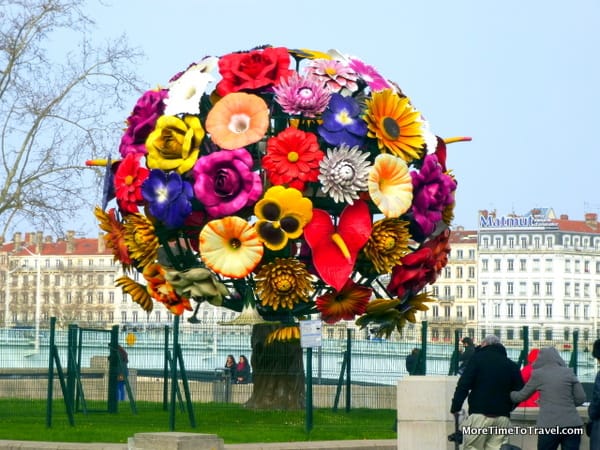
From Paris to Lyon
Don’t get me wrong. The charm, sophistication and ambiance of Paris are unbeatable but Lyon is more tourist-friendly and accessible. There are fewer queues; dining and lodging is less expensive; and locals are demonstrably more welcoming. After a brief conversation, Jean-Luc, a dentist who shared our train compartment unexpectedly offered to drive us to our hotel. After we politely declined, a young female culinary student at the station spotted us and offered to carry our bags to the taxi stand.
Paris has the Seine but Lyon has 30 bridges crossing the two rivers that run through it, the Rhone and the Saone, creating four gracious riverbanks with panoramic views. The center city, which dates back more than 2000 years, was declared a UNESCO World Heritage site in 1998. Vieux Lyon, the city’s oldest district was once the center of the European silk trade. Many of the preserved medieval buildings have secret passageways worming through them, called traboules, once used by workers to protect precious fabrics from the rain.
In addition to opera, ballet and theater, the city’s cultural offerings include one of the largest fine art museums in Europe (Musée des Beaux Arts); a museum that honors the fathers of modern cinema (The Institut Lumiere); a fabric museum that traces the history of textiles and silk-weaving (Musée des Tissus et des Arts Décoratifs), and a Puppets of the World museum (Musées Gadagne) with more than 2000 puppets and 1000 castle sets.
With a Lyon City Card (available for purchase online from the Lyon Tourism Office), we took advantage of the city’s excellent metro system to see many of these attractions for free or at a discount. For an orientation, we took an open-top bus and riverboat tours around the city, which is especially beautiful at night when 35 buildings and monuments are illuminated.
For those interested in fashion and interior design, like Paris, Lyon offers department stores like Printemps and Galeries Lafayette, antique shops, concept stores and trendy boutiques. The city also has its own 250-foot replica of the Eiffel Tower, La Tour Metallique. Built by engineer Jacques Buffaud in 1894, the metallic structure was once an observation tower atop a now-defunct restaurant.
A Foodie Mecca
Skipping breakfasts, we managed to squeeze in enough lunches and dinners to confirm there is no such thing as a bad meal in Lyon. Here are a few of the culinary highlights:
Tracking the footsteps of Paul Bocuse

Lyon is the birthplace of revered Chef Paul Bocuse who popularized nouvelle cuisine around the world. To make dining more democratic, he also created a new type of restaurant, opening five brasseries around the city, each with a distinctive style of French cuisine. We visited one, Brasserie Le Sud, just off Place Bellecour (the largest public square in Europe), which specializes in Mediterranean cuisine.
We also made the pilgrimage to L’Auberge du Pont de Collonges, a 20-minute taxi ride from the city center. The 88-year old Bocuse was born and still lives upstairs in the building that houses this three-star Michelin restaurant whose design and colors look like they came out of a fairy tale. Among the highlights of our lunch were several classics: seared foie gras with passion fruit sauce, quenelles (dumplings) of pike with a Béchamel and crayfish sauce, and a European sea bass baked inside a flaky crust that looked like a piece of art. This turned out to be the most memorable meal we have had in our lives—in terms of the food, service and ambience.
Tackling the restaurants
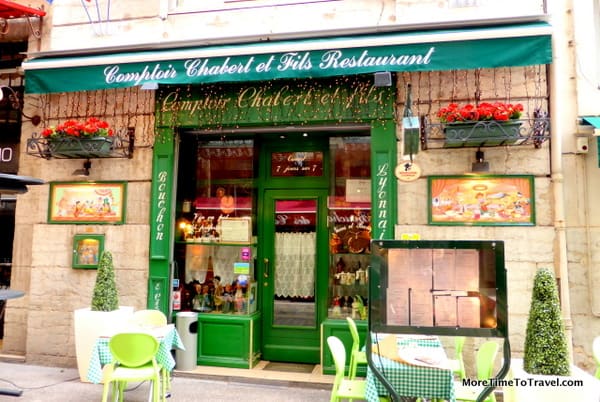
The city has more than 2000 restaurants, ranging from informal ones to the fifteen that have stars in the 2014 Michelin Guide. (There are 72 Michelin-starred chefs in the region). We made a few reservations in advance by reading newspaper articles, blogs and online reviews and then relied on recommendations from friendly locals.
Located at the crossroads of several different terroirs—with Beaujolais to the north and Cotes du Rhones to the south—Lyon has the advantage of being able to draw upon exceptional wine and agricultural products. Here, table wine is typically served in a special carafe with a weighted glass bottom, called Le Pot Lyonnais; it holds roughly a pint (46 cl.) of remarkably affordable local wine, right-sized for two light drinkers.
Historians attribute the origins of Lyonnaise restaurants to the “Meres Lyonnaises,” women who once cooked for prominent families and went on to establish their own businesses serving family-style cooking during the late 19th and early 20th centuries.
Bouchons, family-run bistros that serve large portions of inexpensive fare, are unique to Lyon. Their roots trace back to the taverns or inns where silk traders stopped to eat, clean their horses, and rest overnight. Rue des Marronniers is one of several streets lined on both sides with bouchons, such as Chabert & Fils and Aux Trois Cochons. However, even in Lyon, not all bouchons are authentic. Each year, the Chamber of Commerce certifies those meeting its standards of authenticity and allows them to display a designation “Les Bouchons Lyonnais” in their windows.

Visitors can dine at celebrated gourmet restaurants like La Mere Brazier, a Lyonnaise institution since 1921, founded by one of the first women to earn three Michelin stars. (Chef Bocuse was once an apprentice to Eugenie Brazier.) Another good choice: Les Trois Domes, a one-star Michelin restaurant at the Sofitel Lyon Bellecour that offers panoramic views of the Rhone from a contemporary 8th floor dining room.

Browsing the markets
Although some 26 different outdoor markets are held each week at different locations in the city, inarguably, Les Halles, created in 1859 is the most famous. Over the years, the market has changed locations; was brought indoors and renovated; and was re-named Les Halles de Lyon Paul Bocuse after the iconic chef who did his shopping there. Merchants sell high-quality regional and imported specialty foods beside restaurants and seafood bars that operate under the same roof.
Another outstanding option: The Saint-Antoine outdoor market is located on the banks of the Saone River. Daniel Boulud, the legendary French chef who moved to the U.S. and created an international restaurant empire, grew up on a farm outside Lyon and helped his father sell products there when he was a young boy.
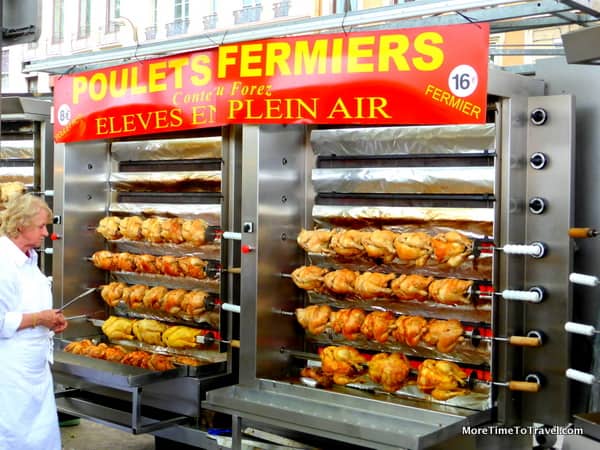

As visitors walk through two rows of stalls that extend for several blocks, they’ll spot food trucks with juicy chickens on rotisserie spits and have the opportunity to sample such delicacies as Saint-Marcellin or Brebis cheese; saucisson brioche, sausage covered in a rich, buttery pastry dough; pates; or tarte aux pralines (characteristic Lyonnaise red praline tarts.) They can even stop for some freshly shucked oysters and eat them at a picnic table beside the river.

Taking cooking classes
Although Lyon has the patina of age, its culinary scene remains vibrant and inventive. Students come here (from around the world) to train in cooking and hospitality, and also to apprentice as cooks and wait staff in restaurants. These same schools offer tourists unique opportunities to perfect their home cooking techniques through hands-on workshops and three- or six-week courses for food enthusiasts sponsored by the Bocuse Institute, both in nearby Ecully or at its new hotel school in Lyon.
While Lyon is less well known than Paris or Provence, food lovers will fall in love with this welcoming city that’s so rich in culinary history and traditions.

IF YOU GO
[This article was previously published in the Sunday Travel Section of the Chicago Tribune on October 5, 2014.]
Previous article about Lyon, France on More Time to Travel:
- Market Visit: Saint Antoine Market in Lyon, France
- Market Visit – Carnot Market in Lyon, France
- Say Cheese: Visiting a cheese bar in Lyon
- Silk Brasserie: Contemporary and casual dining in Lyon
- How Archange become the #1 restaurant in Lyon
- What is a Lyonnaise bouchon?
- The Flower Tree Sculpture in Lyon
- Visiting Lyon on an electric taxi tricycle
- A stay at the Sofitel Lyon Bellecour in the City of Silk
- Guide for First-Time Visitors: What To Do In Lyon

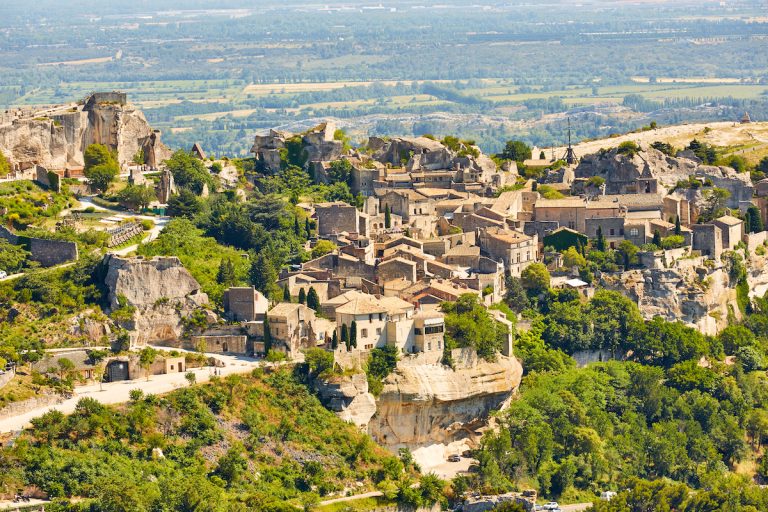
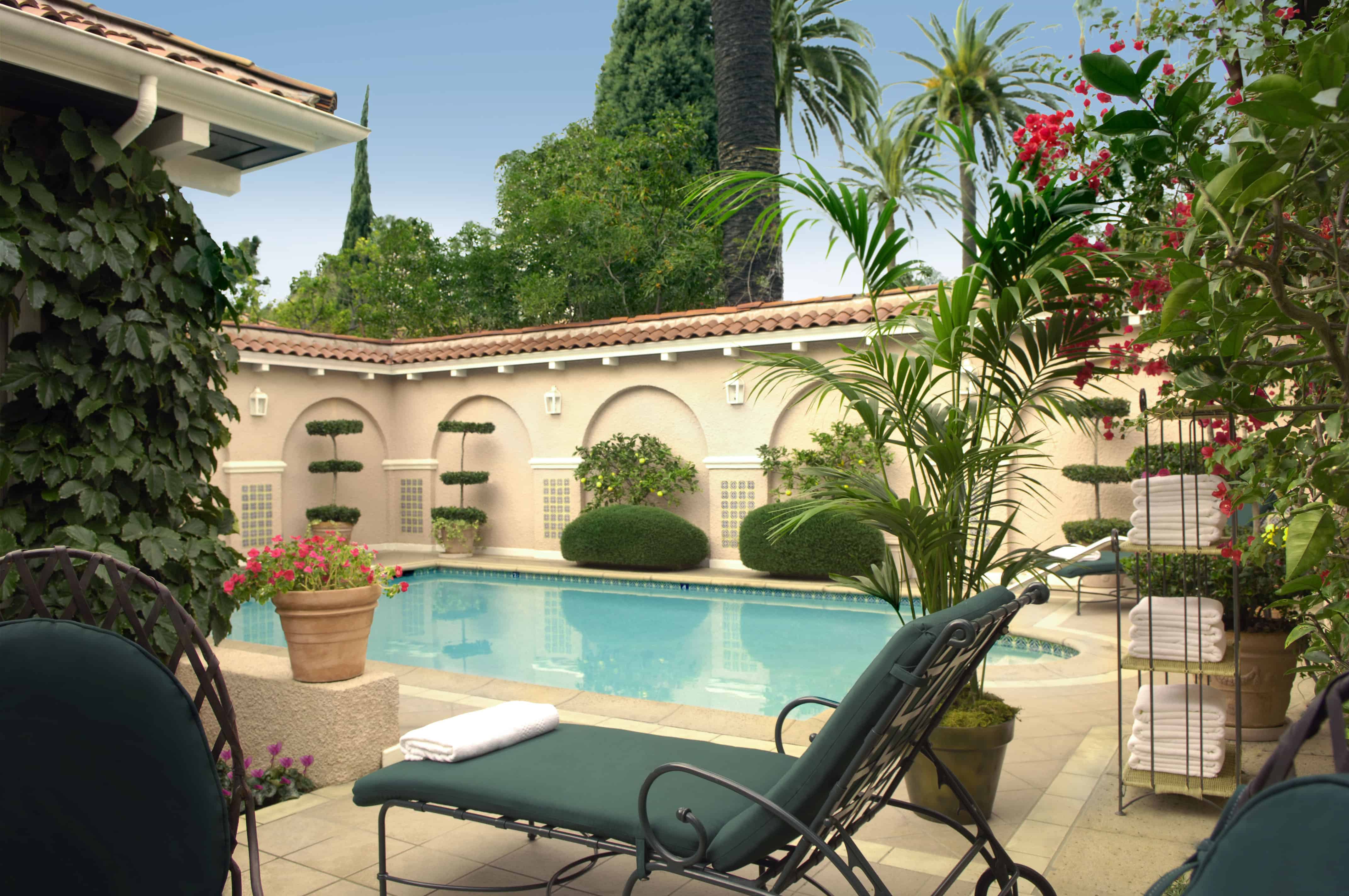

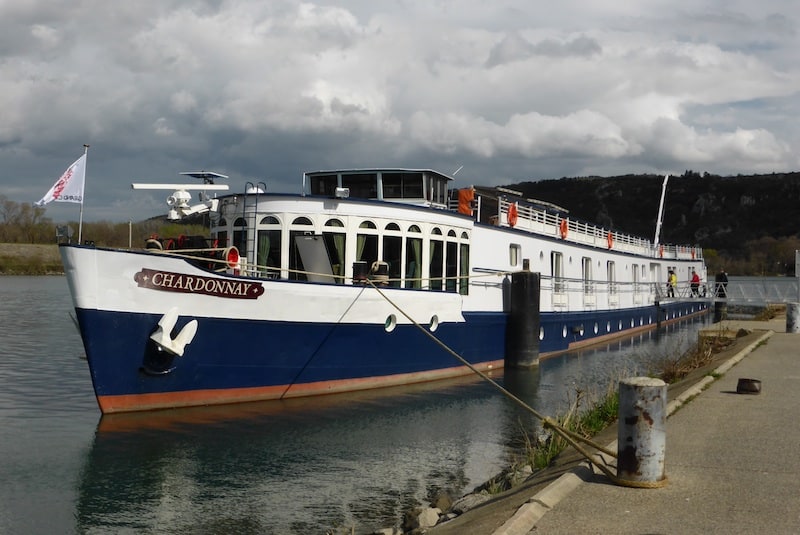
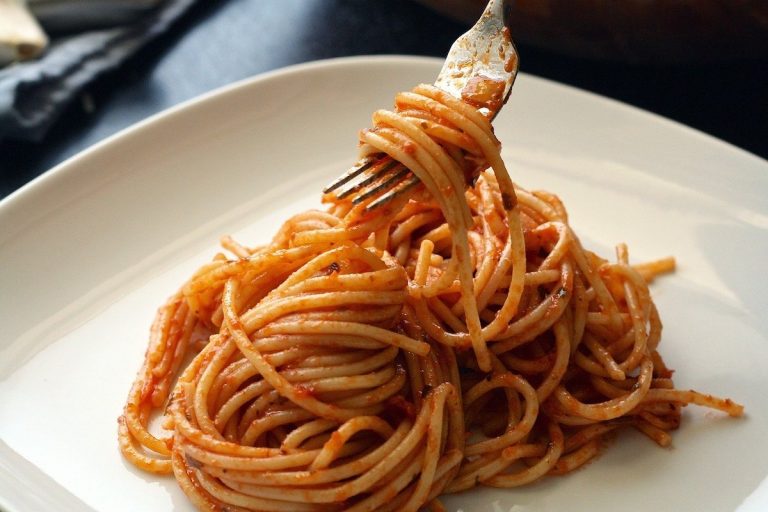
Yes, we love food! And, yes, we’d probably love Lyon… Hopefully it has good walking opportunities to walk off all the calories consumed :-). Probably just strolling the streets everywhere would do the trick, right?
Definitely a walking city!
I am so ready to go! Between your descriptions and the lovely photos, I’m drooling!
Hope you get there, Sheryl!
I love food, especially French food….have never been to Lyon but it is now on my list of places to visit! Thanks for the tips.
Hope they are helpful!
My mouth is watering. I think taking one of the cooking workshops in Lyon would a lot of fun.
As I didn’t get to take one, that is my raison d’etre to return!
Lyon sounds like my kind of city. Restaurants, markets, beautiful and delicious food- couldn’t ask for more. Food is one of the main reasons we love travel.
When I recently looked at the topics of my posts, I realized there were quite a bit more emphasizing food than adventure. I guess food is my adventure, like you!
Oh I would love to visit Lyon. The first food picture is like a piece of art, and the tartine looked to die for! But I like the idea that it’s less busy and more tourist friendly than Paris – my type of place. Must go!
Looking forward to reading your post:-)
The whole city looks beautiful but the idea of it surrounding a 2000 year-old city center and UNESCO World Heritage site just adds to my interest. And of course, the food pictured in your photos… It’s a good thing it’s a walking city because the food looks amazing! We have our reservations in place for Europe beginning in May, 2015 and thanks to your recommendation, Lyon is toward the top of the list!
Can’t wait to hear that you loved it, too, Anita!
I couldn’t have asked for a better story! I leave Friday for Lyon (I live just an hour and a half away) and my plan for the weekend involves food, and an in-depth visit to Les Halles. I’ve often been to this city, which I have learned to love – from my perch in rural France I feel like I’m headed to the metropolis when I visit! What I particularly like about Lyon is its neighborhoods, so well demarcated, each with its own specialty. I’ll be writing about food as well, and thank you so much for this excellent introduction!
Have such a wonderful trip, Leyla! Can’t wait to read your reports!
I’ve heard about Lyon being a foodie paradise and can totally see why from your post. The bouchons look so inviting and the food — scrumptious.
Definitely up there with Emilia Romagna, Cathy!
Wonderful story and photos! My bags are packed…..
Thanks so much for taking the time to say so!
I LOVE FOOD AND FRANCE- I am a real geek about this subject! I have been all over France, but never Lyon. I need to visit this amazing city.
You are an excellent candidate for this experience, Suzanne! 🙂
Love it! Although Tim has prepared many of the same French classics.I hope to some day have enough money to eat at Bocuse’s restaurant.
It’s a bucket list experience! Best meal I ever had in my life!
I loved learning more about Lyon. I love Paris and have been to many other towns in France but not Lyon. I’m definitely putting it on my must visit list.
You won’t be disappointed!
Lyon will occupy a prominent spot on my travel list when I get to Western Europe … mouthwatering food and sexy looking restaurants!